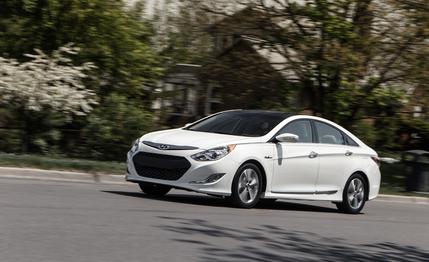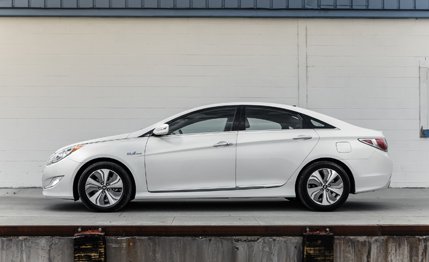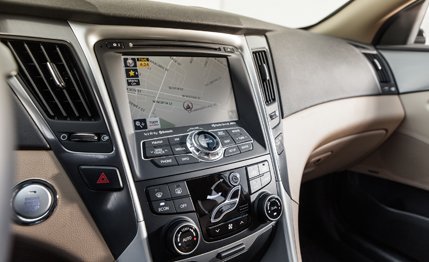 Instrumented Test
TESTED
Instrumented Test
TESTED
Despite what you might have heard, not every U.S. government agency is big enough to insert itself into every aspect of our lives. Witness the EPA, which does not test every make, model, and engine combination for which it publishes ratings. Instead, it sets up procedures and guidelines for automakers to certify that their cars meet emissions regulations and achieve certain fuel-economy results. It’s kind of an honor system, but the EPA does test 15 to 20 percent of new models (as of our 2009 visit to its Ann Arbor labs) and performs occasional spot checks, and that’s how Hyundai and Kia recently were caught fluffing the mpg estimates on a large number of their models. Since the last time we reviewed Hyundai’s Sonata hybrid, the company has been forced to admit that “procedural errors” had inflated its EPA fuel-economy estimates.
As a result of the EPA ruling, Hyundai’s vaunted and heavily advertised 40-mpg club shrank from nearly a half-dozen models to…zero. Under renewed EPA scrutiny to adhere to correct test procedures, not only did the 2011–12 Sonata hybrid fall off the 40-mpg membership roster, but so did versions of the Elantra, Accent, and Veloster. Naturally, Hyundai set about the task of making its cars more—and verifiably—efficient.

The first “rebooted” model to surface is the 2013 Sonata hybrid, which saves some corporate face with its official 40-mpg EPA highway estimate. Our band of enthusiastic drivers achieved 33 mpg piloting the 2013 Sonata hybrid in mixed driving, but that was a worthy improvement over the 27-mpg average we saw in our test of a 2011 model.
Bigger Is Better
The updates for the 2013 model are significant. Hyundai installed a lithium-polymer battery that’s 38 percent larger and more energy dense than before. The hybrid control system was reprogrammed to allow it to dip deeper into the battery’s charge before switching over to the gas engine, thereby spending more time in HEV electric-only mode.

The electric motor is more powerful for 2013, increasing from 30 to 35 kW, enabling the car to whir up to 75 mph using only electrons under light-load conditions. Despite paring back total system output from 206 to 199 horsepower, the larger battery and motor bring a heaping helping of fresh torque—overall twist increases from 193 lb-ft to 235—that notably impacts the Sonata hybrid’s acceleration performance. In our testing, the 0-to-60 time of the 2013 model improved by nearly a second and a half, from 9.5 to 8.1 seconds, putting it close to the 7.9-second 0-to-60 performance of the nonhybrid 2.4-liter Sonata. It also smokes the 2013 Fusion hybrid’s 9.1-second dash, although the Hyundai still trails the 7.3-second Camry hybrid.
The 2013 Sonata hybrid’s acceleration and fuel-economy improvements are quantifiable and worth mentioning, but the car’s better-integrated drivability makes a significant difference. We already liked the smooth electric drive-off feel and the fact that the Sonata hybrid forgoes the usual wheezy CVT for a more-pleasing six-speed step-gear automatic, but Hyundai really hit the books to work out the kinks and smooth transitions between electric and gas-engine hybrid modes. The clutch that takes the place of the torque converter engages more quickly; its interval, according to Hyundai powertrain director John Juriga, decreased from 1.0 to 0.7 second. The goal was for good response with no untoward delays or bumpy transitions.